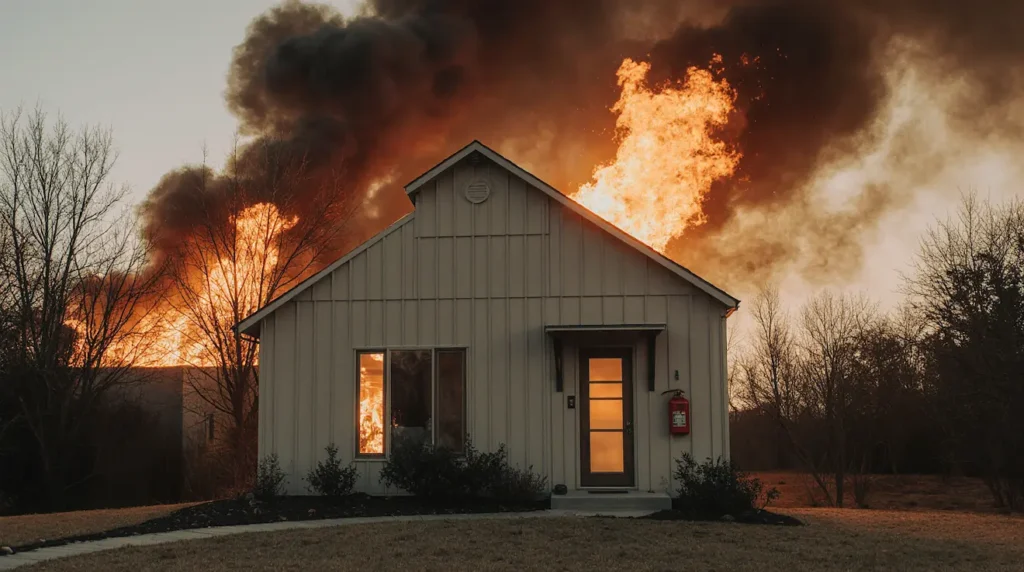Fire protection is one of the most critical safety measures that any company must implement. Understanding the different types of fire protection systems available is essential for choosing the most appropriate solution according to the specific needs of each installation. In this article, we will explore the main categories and systems available in the market.
Main Classification: Active and Passive Systems

Fire protection systems are divided into two fundamental categories according to their operating mode:
Active Fire Protection Systems
Active systems require mechanical or human action to function and are designed to directly intervene in the control and extinction of a fire. These systems detect, control, and extinguish fires directly, either automatically or through human intervention.
Active protection is divided into three main categories:
- Detection: Systems that identify the presence of fire or smoke
- Fire elimination: Equipment that extinguishes or controls flames
- Mechanical ventilation: Systems that control smoke and toxic gases
Passive Fire Protection Systems
Passive systems are designed to contain or delay fire spread without the need for mechanical activation or human intervention. Their main objective is to keep the fire confined for as long as possible where it has been generated.
Passive protection is divided into two categories:
- Structural protection: Fire-resistant construction elements
- Compartmentalization: Divisions that limit propagation
Main Types of Active Systems
1. Detection and Alarm Systems
Detection systems are mandatory according to the Building Technical Code and include various types of detectors:
Smoke Detectors:
- Optical detectors: Use light-emitting diodes (LED) to detect smoke particles
- Photoelectric detectors: Employ a light beam and photodetector sensor
- Ionic detectors: Use an ionization chamber to detect invisible particles
Temperature Detectors:
- Fixed temperature thermal detectors: Activate when reaching temperatures between 47°C and 58°C
- Rate-of-rise detectors: Respond to rapid temperature increases (6.7°C to 8.3°C per minute)
Flame Detectors:
- Infrared (IR) detectors: Detect infrared radiation emitted by flames
- Ultraviolet (UV) detectors: Identify the characteristic ultraviolet spectrum
- Combined IR+UV detectors: Offer greater precision and lower probability of false alarms
2. Automatic Suppression Systems
Automatic Sprinkler Systems:
- Wet sprinklers: Contain pressurized water and activate quickly when detecting heat
- Dry sprinklers: Pipes contain air or nitrogen, releasing water only when activated
- Deluge systems: Discharge water simultaneously throughout the protected area
Clean Agent Suppression Systems:
- FM-200: Gaseous agent ideal for electronic equipment, residue-free
- Novec 1230: Ecological agent with zero environmental impact
- FK 5-1-12: System that doesn’t conduct electricity and is safe for people
Water Mist Systems:
- Divide water into ultra-small droplets (60-200 microns)
- Combine cooling, suffocation, and radiant heat attenuation
- Use up to 1700 times less water than conventional systems
CO₂ Suppression Systems:
- Extremely effective but dangerous for people
- Require mandatory area evacuation
- Ideal for electrical equipment and unoccupied spaces
3. Foam Suppression Systems
Low-Expansion Foam:
- Specialized in flammable liquids (Class B)
- Forms a protective film that prevents re-ignition
- Ideal for mechanical workshops and fuel tanks
High-Expansion Foam:
- Designed to fill large volumes like hangars
- Displaces oxygen while maintaining partial visibility
4. Manual Systems
Portable Fire Extinguishers:
- First line of defense against small fires
- Various types according to fire class (A, B, C, D, K)
- Require personnel training for effective use
Hydrant Systems:
- Must be in closed circuit with exclusive water supply
- Require minimum supply of 946 l/min for 2 hours
- Include siamese connection compatible with firefighters
Passive Protection Systems
Structural Elements
Fire Walls and Doors:
- Built with fire-resistant materials
- Contain the fire preventing spread to other areas
- Provide additional time for evacuation
Penetration Sealers:
- Installed around openings in walls and ceilings
- Prevent fire and smoke propagation through ducts
Fire-Retardant Coatings:
- Applied to structures like beams and columns
- Delay building collapse by withstanding high temperatures
Compartmentalization Systems
Risk Divisions:
- Proper building segmentation into zones
- Include fire walls and fire-resistant floors
- Limit horizontal and vertical fire spread
Regulatory Framework in Mexico
Regulatory compliance is fundamental for the selection and installation of fire protection systems. The main Mexican standards include:
NOM-002-STPS-2010: Establishes safety conditions for fire prevention and protection in workplaces, classifying risk as high, medium, or low.
NOM-154-SCFI-2005: Specifies requirements for maintenance and recharging of portable and mobile fire extinguishers.
NFPA Standards: Recognized international technical standards, including NFPA 13 for automatic sprinklers and NFPA 2001 for clean agents.
Factors for Selecting the Appropriate System
Choosing the right system depends on multiple factors:
- Risk type: Operational processes, temperatures, chemicals present
- Physical configuration: Heights, compartmentalization, access
- Occupancy: Work shifts, personnel training
- Operational criticality: Impact of shutdowns, irreplaceable equipment
- Regulatory requirements: Local, national, and international
Conclusion
Comprehensive fire protection requires a strategic combination of active and passive systems. While active systems provide early detection and direct extinction, passive systems offer containment and crucial time for evacuation. Proper selection must be based on specific risk analysis, regulatory compliance, and the unique characteristics of each installation.
Investment in fire protection systems is not just a legal requirement, but a strategic decision that protects lives, preserves critical assets, and ensures business operational continuity. Consulting with certified specialists is fundamental to design and implement the most effective solution for each particular situation.


